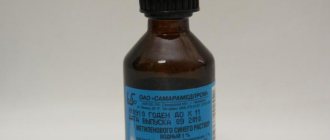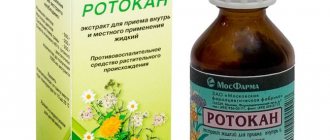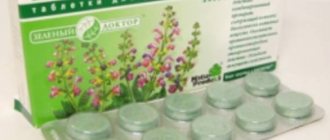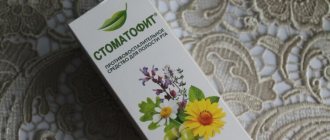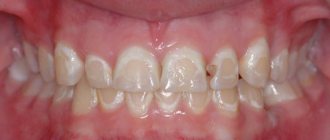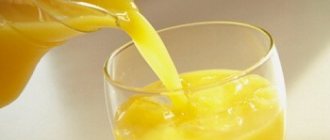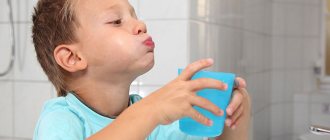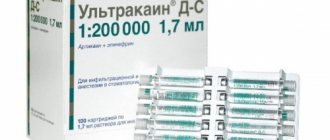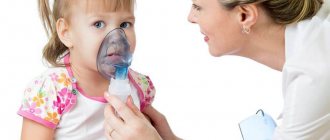Storing Methylene Blue
According to the instructions, methylene blue should be stored at room temperature.
According to available data, the drug is incompatible with caustic alkalis, dichromates, iodides, oxidizing agents or reducing agents.
Pharmacological action Methylene blue is quickly converted in tissues to leucomethylene blue. This substance is a reducing agent and is involved in the conversion of methemoglobin (Fe+++) to hemoglobin (Fe++). Methylene blue is an oxidizing agent and, in high doses, can itself cause the development of methemoglobinemia.
Storage conditions and interactions with medications
The drug has virtually no contraindications, with the exception of individual intolerance, manifested in the appearance of allergic skin reactions. It is not recommended to apply the solution to mucous membranes.
Methylene blue can be successfully used in the fight against many chicken diseases
Methylene Blue is an antiseptic drug.
When used externally, allergic reactions are possible. Moreover, the larger the area being processed, the higher the likelihood of their occurrence.
No significant interaction with other agents has been identified.
But the following adverse reactions were observed in some patients:
- Nausea and vomiting;
- Abdominal pain;
- Burns of mucous membranes;
- Allergic skin rashes.
To prevent the drug from becoming unusable and causing harm, the following is required:
- contain a bottle of medicine without access to light, at a temperature not exceeding 25 degrees C,
- alcoholic liquids can be thrown away due to expired after 2 years, aqueous solutions - one year after production.
Non-prescription drugs.
Methylene blue is available without a prescription. The purchased drug must be packaged in a hermetically sealed bottle with an additional cap. It is recommended to store the solution in a dark, dry room with average air humidity. Do not expose the bottle with the active substance to direct sunlight. The average temperature at which a sealed and opened bottle is stored is from 15 to 25 degrees Celsius.
The shelf life when stored correctly is 2 years from the date of issue, which is indicated on the package. Drug interactions with other medications were not identified during the studies. Ethyl alcohol included in the product, when taken orally, can impair coordination of movement or inhibit the body’s usual reactions, therefore, after taking the drug, travel and excessive physical activity should be limited.
Application in veterinary and human medicine
The use of methylene blue solution is used mainly for children for rinsing the throat and in ruminants for the treatment of methemoglobinemia due to poisoning with oxidizing agents (nitrites, chlorates). The drug is also sometimes used as an additional or alternative therapy for cyanide toxicity.
During surgery, methylene blue solution is also used to selectively stain pancreatic islet cell tumors in dogs for the purpose of surgical removal or to determine the prognosis of the disease. The drug has antimicrobial and anti-inflammatory activity.
Pharmacokinetics of an aqueous solution of methylene blue
Pharmacokinetics Methylene blue aqueous is absorbed from the gastrointestinal tract
, but in veterinary medicine the drug is usually administered parenterally. It is excreted in urine and bile, mainly in a colorless form, although some amount may be excreted unchanged.
Composition, release form
Methylene Blue - In Latin, Methylenum coeruleum is a dye. Other names for this substance are known: Methylene blue, Methyl blue. When dry, it appears as dark green crystals with a characteristic bronze luster. The active ingredient is methylthioninium chloride.
The drug is used mainly in the form of an alcohol solution. It contains alcohol and methylene blue itself. A weaker aqueous solution may be used. Its composition is represented by Methyl blue and purified water.
A special solution is prepared for intravenous administration. Its dominant component is Methylene blue (solution with a concentration of 1%). Glucose (25%) is used as another active ingredient. Additional components are also included - stabilizer and prolongator.
The main form of release of the alcohol preparation is glass bottles with a solution with a concentration of 1%. Their average volumes are 10-15 ml.
Methylene blue
Aqueous ready-made solutions of Methylenum coeruleum are produced in glass bottles of 10, 25, and 50, 100 ml. A special solution is intended for intravenous administration, contained in ampoules of 20-50 ml.
Contraindications
Effects on reproduction Methylene blue is contraindicated in animals with renal failure; hypersensitivity to the drug, it should not be administered intraspinal (intrathecal). Many veterinary specialists believe that the drug is contraindicated in cats; this type of animal may develop anemia with Heinz bodies and methemoglobinemia due to the use of methylene blue. Methylene blue is believed to be a relatively ineffective drug for reducing methemoglobin in horses.
The safety of the drug during pregnancy has not been established.
Blue with stomatitis in the mouth
Blue is a popular designation for the thiazine dye methylene blue. This old drug has powerful antiseptic properties.
For medical use, this medicine is available in the form of a 1% aqueous and 1% alcohol solution and in powder.
This medication is a safe remedy, so it is used both for application to mucous membranes and taken orally (only on the recommendation of a doctor).
Due to its antiseptic properties, doctors allow the use of this medical product to eliminate harmful microbes and bacteria in the mouth and for treatment of stomatitis. In acute and chronic forms of the disease, the medicine is used to disinfect the entire oral mucosa (using a cotton pad).
Important! Immediately before starting treatment, you need to remove plaque from mouth ulcers using cotton wool treated with natural oil. Flaxseed, sea buckthorn, peach and rosehip oils are suitable for processing.
Advantages:
- characterized by high redox and antiseptic effects;
- the composition does not contain alcohol, which allows the medicine to be used to treat children;
- safety;
- low cost;
- the healing process of ulcers begins already on day 3;
- applied both individually and as part of a complex impact;
- you can prepare the drug yourself;
- is excreted naturally;
- The product can be used during pregnancy.
Photo 1. Methylene blue from the manufacturer Bluebrainboost qualitatively and safely helps fight stomatitis in both children and adults.
Flaws:
- the bright blue color of the drug, any actions with blue must be done with gloves, and the treated mucous membranes for some time acquire a bright blue color;
- cannot be used in children of the younger age group - up to one year;
- low effectiveness against a number of certain viruses and bacteria;
- manifestations of allergies in the form of rash, redness, burning and itching are possible;
- not recommended for use in children without prior consultation with a doctor;
- short shelf life;
- not always on sale.
This medication is contraindicated in case of individual intolerance or allergies. It is also important to remember that it should not be used to treat an age group under 1 year of age.
Reference! The product in the form of an aqueous solution is difficult to find on sale. Blue can be ordered in the prescription department using a pre-written prescription from a doctor, but the period of use will have a strict time limit.
When opening an industrially manufactured medical product, its shelf life after opening the individual packaging is about 10 - 12 days.
This medicinal solution is effective only for the form of the disease caused by microbes (for example, aphthous stomatitis).
With the herpetic type of disease, blue does not have a therapeutic effect, but only creates protection for the damaged oral mucosa from re-infection.
In this case, the methylene blue solution is recommended to be used only as an auxiliary agent.
Reference! The effectiveness of using bluing becomes higher when used in combination with Cholisal or Iodinol.
Use of methylene blue in children
Methylene blue is an antiseptic
, has a bacteriostatic effect due to interaction with mucopolysaccharides and proteins of microorganisms.
The drug methylene blue aqueous is used for children with:
- diseases of the urinary tract, incl. cystitis, urethritis
- burns
- pyoderma
- folliculitis
According to the instructions, the drug may have side effects for children. Individual intolerance, allergic reactions. If side effects occur, stop using the drug and consult a doctor.
Contraindications for use. Hypersensitivity to the components of the drug.
Use during pregnancy and breastfeeding. Can be used during pregnancy and breastfeeding. The use of methylene blue in children is possible from the moment of birth.
Methylene blue – we destroy infection without antibiotics
Blue is a crystalline dark green free-flowing powder of an organic compound (methylthioninium chloride), effectively used in medicine and veterinary medicine as a strong antiseptic and harmless diagnostic tool, and in the textile industry as a dye. In modern medicine, it has a special place as a powerful fighter against parasites, infections and various types of bacteria.
About the product
The unique antiseptic properties of aqueous and alcoholic solutions of bluing were revealed to the world community back in the 19th century.
The essence of the effectiveness of the drug lies in applying a liquid with methylene blue to the surface of the infected epithelium, where a strong connection of organic matter with the DNA of pathogenic microorganisms is immediately formed, as a result of which foreign cells instantly die.
Antiseptic blue solutions are very popular for disinfection in surgery, dentistry, urology, gynecology, and many other branches of medicine and veterinary medicine.
Pharmacokinetics and mechanism of therapeutic effects
The healing properties of solutions of this product lie in the destructive effect on all kinds of parasites that live on the skin and mucous membranes of humans:
- Viruses.
- Fungi.
- Bacteria.
- Protozoa.
Methylene blue has excellent anti-inflammatory and wound healing properties. In addition, solutions are effectively used as an antidote for poisoning with nitrites, carbon monoxide, cyanide, and hydrogen sulfide. Because in low concentration it activates the conversion of methemoglobin into hemoglobin.
According to new scientific data from doctors in Singapore and England, methylene blue is classified as a potentially effective drug for treating dementia in Alzheimer's disease, since the drug slows down the process of cell degradation.
Indications for use
Where, what and how to lubricate?
The use of aqueous solutions is advisable for the following diseases:
- Stomatitis, caries, thrush, herpes in the oral cavity for disinfection, drying of ulcers, blisters, ulcers, accelerating the regeneration of mucous membranes.
- Follicular tonsillitis, pharyngitis, laryngitis - as a local antiseptic, spot treatment of pustules.
- Thrush - to destroy pathogenic fungi in the mouth of babies and on the cracks of the nipples of mothers' breasts. Used in the vaginal area to lubricate individual fragments of the blistering rash.
- Inside the urethral canals it is used to cleanse bacteria.
- Only in hospital settings: for diagnostic purposes - used intravenously. In case of poisoning, use according to the protocol after identifying the type of toxin.
The use of an alcohol solution is practiced to disinfect the epithelium in the following cases:
- On small surfaces there are thermal burns.
- For ulcers and blisters on the skin due to infectious lesions.
- To reduce the area of suppuration in eczema, pyoderma.
- For the purpose of disinfecting blistering rashes and boils.
- For insect and animal bites to prevent bacterial infection of wounds.
- For antiseptic treatment of skin damaged as a result of injuries (a child fell, a broken knee).
In case of a rash of unknown etiology, it is impossible to lubricate the blisters with methylene blue before examining a doctor; this will lead to a distortion of the picture of the infectious disease, inaccurate diagnosis, and, as a result, incorrect treatment.
Contraindications and negative side effects
The aqueous solution is not completely toxic (unlike many chemical antiseptics); in cases of stomatitis and thrush, it can be used spot-on to lubricate canker sores, even for children over one year old. After lubricating the nipples, mothers should wash them with warm water before feeding the baby.
The main conditions for excluding bluing from your home medicine cabinet:
- Drug intolerance.
- Kidney failure (internal use).
In case of accidental contact with the eyes, you should urgently call an ambulance, and before it arrives, thoroughly rinse the mucous membranes.
To avoid critical side effects, the drug is used to lubricate small areas of mucous membranes, and neighboring areas are gradually treated.
Overdose
What to do in case of an overdose, which can occur if a large surface area of the skin and mucous membranes is treated?
Side negative effects:
- vomit;
- lower abdominal pain;
- pain in the kidney area, stomach;
- allergic rash, skin hyperemia, swelling.
If they are detected, you should immediately wash off all the blue from the epithelium and immediately call a doctor (or go to the clinic) for detoxification.
How to properly use methylene blue to lubricate infected oral mucous membranes:
Treatment of aphthous stomatitis and thrush
The ulcers are moistened pointwise with an aqueous 1% solution, for which a sterile cotton swab is dipped into it. You should first dry the saliva with a sterile swab.
The procedure is repeated for adults - up to 8 times, for children - up to 4 times after meals (per day).
For stomatitis and candidiasis in infants, only the mother’s breast nipples are treated so as not to damage the baby’s delicate mucous membranes
Viral infection (herpetic rash)
Herpes blisters on the lips and in the mouth are treated with an aqueous solution, and near the border of the lips - with an alcohol solution.
Be sure to lubricate a small area of adjacent unaffected skin to avoid the spread of infection.
If there are extensive lesions on the tongue and gums, adults are allowed to rinse their mouths with the prepared solution up to 2 times a day (in the absence of other antiseptics).
Wound treatment
To lubricate the body skin affected by erosion, you can use alcohol solutions of 1 - 3% concentration
Treating a large surface is a rather painful procedure, so you need to stretch it out over time.
You should not smear it often, 2 times are enough - in the morning and at night.
Internal use
For the purpose of washing the mucous membranes of the genitourinary organs, aqueous sterile solutions (0.02%) are used.
For the treatment of mucous membranes in gynecology and external viral manifestations (herpes on the lips, face and body), only the aqueous version of methylene blue is allowed to be used; for the treatment of the genital skin, alcohol liquids (1% concentration) can be used.
Intravenous doses for poisoning are determined by the doctor. Self-medication will complicate the situation.
Long-term use can cause anemia, so the treatment process should be monitored by a doctor.
special instructions
Keep the medicine away from the hands of children and the elderly.
The use of bluing is not allowed if there is a low pain threshold (increased intolerance to pain).
If there is loose plaque on the mucous membranes, you should first remove it, then treat the surfaces.
Opinions of doctors and patients
Here's what doctors and patients with experience of using it say in their reviews of Methylene Blue:
I believe that civilized Europe does not consider Methylene blue as a good antiseptic for the treatment of mucous membranes of the tonsils and oral cavity. The drug should only be used to kill infections on the skin. However, it confirms the usefulness of injections of solutions as an antidote and diagnostic tool.
Doctor Komarovsky E. O. (Ukraine)
There was no point in treating genital herpes with anything, only methylene blue helped get rid of the sores. I cauterized it with a solution of alcohol every 4 hours, and as a result, I have been in remission for 2 years.
Alena E. 40 years old
Previously, there was no trace of any antiseptics other than brilliant green and blue. Chickenpox, rubella in children, even small measles were treated by cauterizing the blisters. An excellent remedy: on my face and my daughters’ face, as well as on my body, not a single pockmark (scar) has formed from a sore wound.
Olga K. 59 years old
When the skin cracks due to eczema, I always apply blue, because I am allergic to almost all medicinal solutions. Then I lubricate it with vegetable oil ointment and mummy. Heals quickly.
Sergey E. 30 years old
Doctors for the most part treat treatment with caution, and patients have only a favorable opinion about the remedy.
Conditions of storage and dispensing in pharmacies
To prevent the drug from becoming unusable and causing harm, the following is required:
- contain a bottle of medicine without access to light, at a temperature not exceeding 25 degrees C,
- alcoholic liquids can be thrown away due to expired after 2 years, aqueous solutions - one year after production.
Non-prescription drugs.
Analogs and possible substitutes
Unfortunately, there are no medications with the same chemical composition.
But the industry offers many good antiseptics that effectively destroy any pathogenic microflora:
| Inexpensive, in the same price category (23 - 30 rubles) as blue | Antiseptics costing 70 – 240 rubles. |
| Rotokan | Furacillin |
| Diamond green | Ingalipt |
| Chlorhexidine | Chlorophyllipt |
| Hydrogen peroxide | Miramistin |
| Hexoral | Octenisept. |
In any situation, it is better for a doctor to tell you about the possibility of using a drug, since analogues and substitutes must be selected taking into account the viability of the pathogenic flora.
METHYLENE BLUE FOR AQUARIUM WATER
Methylene blue conditioner - a solution used for the treatment and prevention of fish diseases
. “Methylene blue” is intended for creating and maintaining a safe, healthy environment in the aquarium that prevents the development of harmful microorganisms in the aquarium water, including various fungi.
The conditioner is also recommended for water conditioning in aquariums:
- in containers in which fish are transported;
- in so-called quarantine aquariums, in which fish are kept before being transplanted into a general aquarium;
- in spawning grounds - to create comfortable conditions that contribute to a significant increase in the survival rate of fertilized eggs, larvae and fry
Learn about essential antimicrobials in animals
- Trichopolum in veterinary medicine
- Instructions for the use of the antibiotic Baytril in animals
- Use of metronide in veterinary medicine
- Use of ceftriaxone for animals
- Explore the breadth of Metrogyl's antibacterial effect in animals
- Instructions for doxycycline in animals
- Metronidazole (Metronidazole) for animals (instructions for use in veterinary medicine, doses, indications and contraindications)
- Atovaquone (ATOVAQUONE)
- Azithromycin for veterinary use
Overdose and adverse reactions of the body
The live bacteria preparation is prepared similarly to the yeast preparation, but the bacteria can be viewed without adding dye.
. The specimen is viewed with a 90 X immersion objective, preferably in a dark field (i.e. with the aperture closed). If the bacterial culture is mobile, then rapid, varied movements of individual cells are clearly visible.
Morphology of hungry and old cells (magnification 400x).
To prepare a preparation of mold fungi, very carefully (so as not to destroy the sporulation organs) with a special needle (can be dissecting) or botanical tweezers, remove a piece of the fungal film and transfer it to a drop of water previously applied to a glass slide. The preparation is carefully, lightly pressing, covered with a coverslip and examined under a microscope with an 8X objective.
To take the product, it is necessary to dilute the concentrated drug or protect adjacent healthy areas of the skin. Alcohol, as the main substance in the product, dries out the skin and causes slight itching. For people with sensitive skin, the concentration of the solution is halved. An alcohol concentration of 1 to 3% is prescribed depending on the degree of skin damage and complications that arise.
To treat infections use:
- for cystitis, select an aqueous solution of 0.02% (the product in powder form is diluted with a liter of water);
- for oral administration, use 0.1 g no more than 4 times a day;
- the concentration of the solution for children is no more than 0.005 g (the dose increases with the age of the child);
- poisoning and severe intoxication are treated with a 1% solution mixed with glucose (25 mg of glucose per 100 g of product).
In cases of aniline poisoning, use a concentrated solution. To prepare it, mix 100 ml of the main substance (1% solution) and water. The dose is calculated at 0.15 mcg of the drug per 1 kg of patient body weight. The solution reacts with poisons and helps remove dangerous substances from the body.
The occurrence of side effects occurs against the background of a violation of the dosage of the drug. Damage caused by the drug manifests itself in problems with the bladder, kidneys, or gastrointestinal tract. Patients with overdose experience vomiting, severe chills, elevated body temperature and anemia.
We suggest you familiarize yourself with: Solcoseryl ointment. What does the drug help with, medicinal properties. Instructions for use
An overdose occurs against the background of frequent use of the treatment product. Alcohol dries out the skin, resulting in cracks and new wounds appearing on the weakened epidermis. In case of an overdose of the solution, standard therapy (symptomatic) is prescribed. Any side effects are the reason to discontinue the drug or replace the alcohol solution with an analogue.
Method of taking methylene blue water in aquariums
According to the instructions for use, 1 bottle (50 ml of solution) contains 0.3 g of methylene blue. This amount is calculated for use in an aquarium with a water volume of 100 liters, that is, 5 ml of this solution for every 10 liters of aquarium water. As a measuring container, you can use the cap of the bottle, which holds approximately 5 ml of solution.
A certain amount of methylene blue solution, calculated for the entire volume of water in the aquarium
, diluted with fresh, settled water in a glass container with a capacity of 200-250 ml. Then this solution is gradually poured into the aquarium in equal portions, in three doses at intervals of 20-30 minutes, while carefully stirring the water. For faster and more uniform mixing, it is convenient to use an aeration unit. It is unacceptable to pour the entire solution into the aquarium at once. If necessary, the procedure can be repeated after a week, having previously replaced 1/3 of the water volume in the aquarium. The process of improving the aquarium environment can last up to one month. It should be borne in mind that methylene blue completely suppresses nitrification, which is carried out in the aquarium by beneficial nitrifying bacteria. Therefore, during the treatment period, the biofilter must be removed from the aquarium.
To remove the bright blue color from the water at the end of the treatment, use an activated carbon filter.
It is possible to condition the water in aquariums without removing the fish from them, but caution should be exercised when using conditioner in aquariums containing invertebrates.
Instructions for using methylene blue for dental purposes
In dentistry, the solution is used in most cases as an excellent antiseptic, which is indispensable for many doctors.
Typically, in this medicine, blue is used in the form of a ready-made 1% solution in water.
This solution is applied to damaged tissues ; in the oral cavity, it is necessary to use a medical swab or cotton swabs, because when working, the solution can stain the skin of the hands. The decision to use or not to use methylene blue in treatment must necessarily be based on the conclusion of a doctor who will determine whether you are allergic to this solution and other nuances.
Side effects
The greatest concern with methylene blue treatment is the development of Heinz body anemia
or other morphological changes in red blood cells, methemoglobinemia and reduced life span of red blood cells. Cats are most sensitive to these effects and therefore methylene blue is generally contraindicated in them, although dogs and horses are known to develop similar problems when given relatively low doses of the drug.
When the drug is administered subcutaneously, or if it enters extravascularly, necrotic abscesses may develop.
Doses of methylene blue for animals
Dogs use the drug in a dose:
To selectively stain pancreatic islet cell tumors:
- According to the instructions, methylene blue aqueous 3 mg/kg with 250 ml
of sterile isotonic solution is administered intravenously over 30-40 minutes during surgery. Initial staining of the tumor takes approximately 20 minutes after the start of the infusion, with a maximum of 25-35 minutes. The tumor usually stains reddish-purple against the dark blue background staining.
Procedure
How is blue linen used? The instructions will allow you to perform the procedure correctly:
- Dilute the substance according to the instructions. There should be no clots of coloring agent left in the water; it should be uniform in color.
- The bath needs to be filled with water.
- Then you should lay out your clothes in the bathroom. Uniformity is necessary so that when dyeing you get one color. The water should cover the item. For a slight bluing, a few minutes are enough, and for coloring from 1 hour. For jeans you need 2 hours.
- Then the item must be dried flat.
Doses of methylene blue for ruminants:
Caution: The FDA does not allow this drug to be used in food animals because it is suspected of being carcinogenic.
In case of intoxication with subsequent methemoglobinemia (nitrates, nitrites, chlorates, etc.):
- Doses of methylene blue in cattle:
8.8 mg/kg intravenously slowly, using a maximum of 1% solution, can be repeated if necessary. To prevent hypotension from nitrite poisoning, a sympathomimetic drug such as epinephrine (adrenaline) or ephedrine can be administered; - doses of methylene blue solution in cattle: 4.4 mg/kg intravenously, using a 2-4% solution;
- doses of methylene blue in cattle, sheep: 8.8 mg/kg intravenously slowly, using a 1% solution in an isotonic solution; if the response is unsatisfactory, then after 15-30 minutes the administration of the drug can be carefully repeated. Other animal species should use a dose of 4.4 mg/kg.
Instructions for use and dosage
Recommended safe doses, based on clinical studies in animals and humans, range from 0.5 to 4 mg/kg.
For nootropic and everyday use: 150-250 mcg/day.
Can be used in several ways:
- Sublingual.
- Mixing with water.
Sublingual
- The bottle contains 25 ml.
- 1 ml contains 10 mg Methylene Blue.
- Since the solution is alcoholic, 1 ml contains about 40 drops.
- We take the average - 200 mcg or 0.2 mg.
- It's about a drop.
- Place a drop under the tongue and hold for about a minute until absorbed.
Mix with water
- Take 1 liter of clean water.
- Add 1 ml there (10 mg of substance or 40 drops). This bottle now contains about 40 daily doses.
- In 25 ml of water we contain 1 dose or 0.25 mg of Methylene Blue (“half a shot glass”). We will use this measure.
- This mixture can be added to tea or other liquid.
Parameters for monitoring
- methemoglobinemia;
- erythrocyte morphology, erythrocyte index, hematocrit, hemoglobin.
Owner Information: Because of the potential toxicity of methylene blue and the severity of methemoglobin toxicity, this drug should only be administered under the direct supervision of a professional. Methylene blue can stain clothing and skin, which can be eliminated using hypochlorite solutions (does not have a bleaching effect).
Medicines:
- Methylene blue solution for injection 10 mg/ml in ampoules of 1 ml and 10 ml; Generic, (Rx).
- Methylene blue tablets 65 mg; Methblue 65® (Manne Co), Urolene Blue® (Star); (Rx).
^Top
Analogs
The best pill is the one you made with your own hands. In addition, purchasing ready-made medical blue is not so easy now. Of course, you can spend a day searching for iodinol, but it’s better to prepare it in 5-10 minutes.
You will need:
- 1 tsp. starch (10 g)
- 1 tsp. sugar (10 g)
- a few citric acid crystals (0.4 g)
- 1 tsp. 5% alcohol solution of iodine.
Please don't neglect the ingredients! We need lemon for acidification so that starch does not lose its properties. Sugar partially neutralizes toxins and improves taste. If you plan to give the medicine to a child, you may want to add more sugar or fruit syrup.
- Dissolve starch in 50 ml of water
- Add remaining solids
- Bring 150 ml water to a boil. Slowly pour in the mixture
- Remove the mixture from the heat. Let her cool down
- Pour in iodine.
All that remains is to observe the color change. Miracles of transformation!
Methylene blue has a rapid antiseptic effect and helps disinfect a wound with possible bacterial infection. If for a number of reasons it is not possible to use an alcohol solution, the patient is prescribed an effective analogue with a similar principle of action. The drug "Bioantisept" is used for external use.
Analogs can be alternated with a solution based on ethyl alcohol, but only as prescribed by the attending physician. An initial consultation with a specialist will help avoid drug overdose and severe allergic reactions. Analogues are prescribed in cases where the use of a concentrated blue solution has had the opposite effect - a rash and severe irritation appear on a person’s skin.
If for some reason the drug is not suitable for the patient, it can be replaced with analogues. These are:
- Hydroperite. Tablets for preparing an antiseptic solution. Used to rinse the mouth for stomatitis;
- Potassium permanganate. Antiseptic for treating mucous membranes;
- Myristamide. A colorless antiseptic liquid that destroys microorganisms. Used for various forms of stomatitis;
- Sodium tetraborate. Transparent disinfectant liquid used in dentistry, gynecology, surgery.
